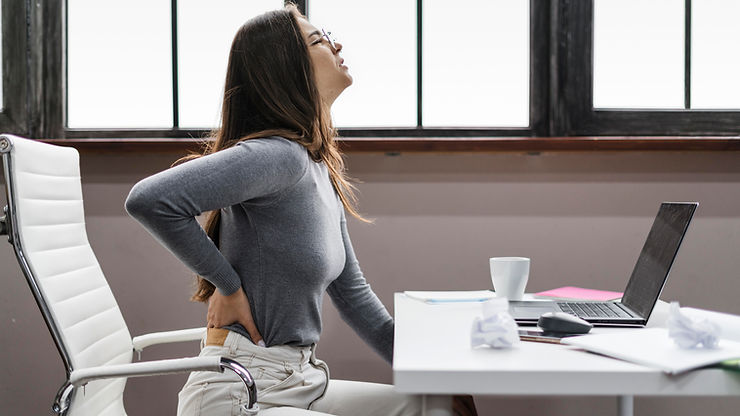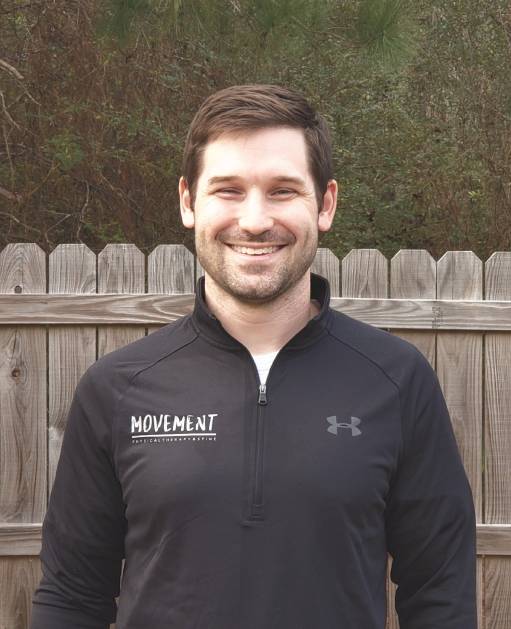1. Make Time to Move
Believe it or not, the majority of lower back pain is not caused by “injuries” per se, e.g. falls, ski accidents, etc. What most often leads to back pain are poor movement patterns, unregulated stress, and prolonged static positions, causing what is known as “mechanical pain.”
Simply put, evolution didn’t prepare us to sit at a desk 8+ hours a day! Our spines are designed to swivel and move, so movement is key to keeping pain and stiffness at bay. As the saying goes, “motion is lotion”.
A good approach when working is to take a five minute break ideally every 30 minutes, but no less than every hour to move around to prevent your muscles and joints from tightening up. This can be as simple as marching in place, going up and down on your tiptoes, or doing a few air squats.
2. While Working, Alternate Between Sitting and Standing
Similar to our first tip, a good way to prevent or alleviate back pain is to change positions while working. Alternating between sitting, standing, or even kneeling every hour or so is ideal.
If you expect to be working from home more often in the future, a transition desk aka a sit-stand desk may be a good investment to consider.
Although research is still in the early stages, evidence has shown that transition desks can offer numerous benefits, including reducing back pain, improving mood and energy levels, and increasing productivity.
3. Avoid Sitting on Deep, Plush Furniture for Long Periods
The spine appreciates balanced movement in all directions to remain healthy. When sitting for long periods on deep and plush surfaces the low back tends to “round out” and remain in the this position of extreme “flexion” which puts added stress on the soft tissue and the joints of your low back.
Look for furniture that is more firm and supportive which will allow you to maintain your low back in a more “neutral” position.
4. Avoid Sitting with Crossed Legs
This advice is true for the same reason as tip #3…our spines do not appreciate having to hang out for prolonged periods at the extreme ends of twisting or turning. Crossing your legs will do this and cause much more pain and stiffness in the low back when sitting and upon rising.
5. Ensure the Best Support When Sleeping
Survey’s have shown that the average person will be most comfortable on a medium-firm type mattress. And as a bonus, sleeping with a pillow between your knees will help to maintain your back in a comfortable, neutral position through the night, helping you feel rested and avoid the pain and stiffness which is most evident first thing in the morning.
6. Choose Supportive Footwear
Poor choices in footwear include high heals, sandals and flip-flops. These have a lack of cushioning and support to absorb shock when standing and walking. This forces the low back to have to take most of the impact every time your foot lands on the floor (not good for your knees or hips either).
If you can absorb some of the shock by wearing nice soft, well fitted and cushioned shoes, then you could reduce your back pain by as much as 20-25%.
7. Get Evaluated by a Movement Expert
Even though using these tips will make a surprising difference with your back pain, in order to truly get to the root of the problem and fix it for good, it is vital that you consult with a physical therapist that you trust.
Medication may mask symptoms, but rarely resolves the underlying problem. Invasive procedures like surgery and injections are also hit or miss options.
There is no faster way to END your back pain than by seeing a qualified Doctor of Physical Therapy. If you’re ready to get started, click one of the links below so that we can get you on the road to feeling good again!
~ Dr. Dallin Page


